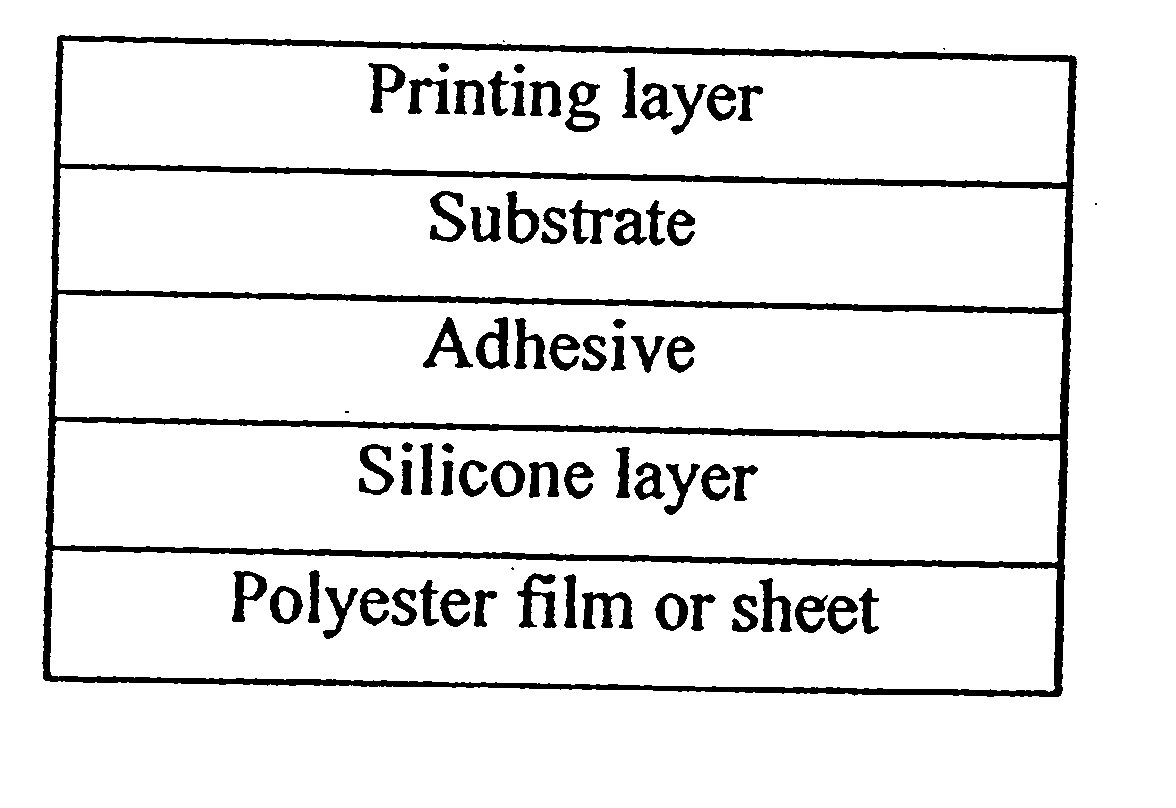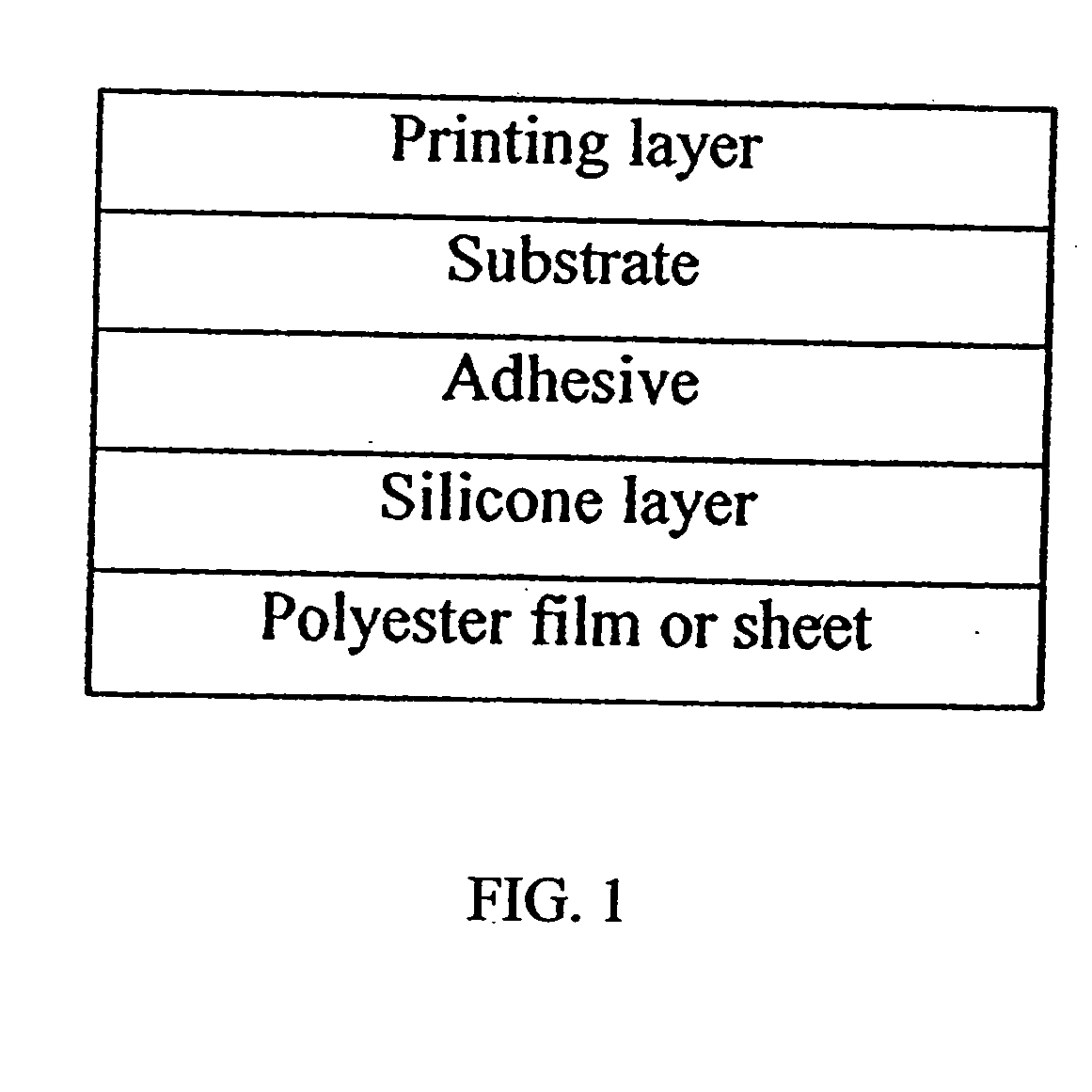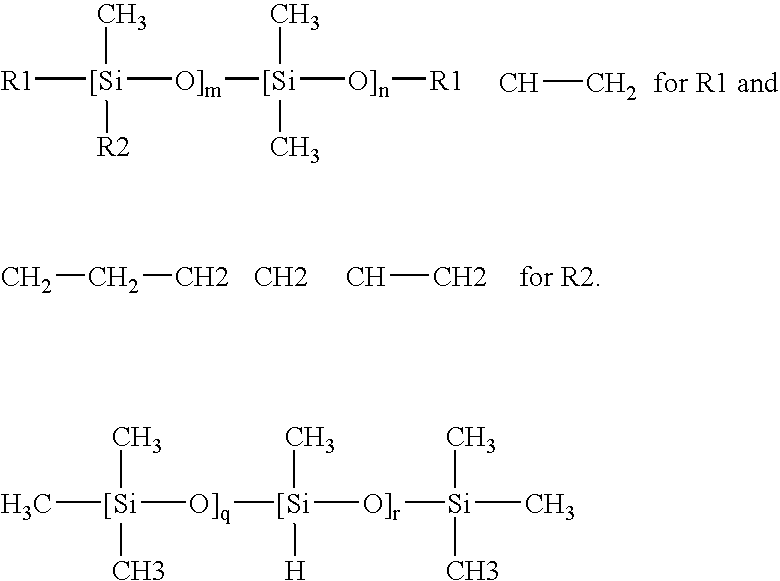Silicone release polyester film
a technology of polyester film and silicone, applied in the direction of film/foil adhesive, synthetic resin layered products, instruments, etc., can solve the problems of bad external physical properties of the coated film surface, bad bath life, filtering problems during the coating process, etc., to achieve low viscosity of the release liquid, increase the viscosity, and the effect of high viscosity
- Summary
- Abstract
- Description
- Claims
- Application Information
AI Technical Summary
Benefits of technology
Problems solved by technology
Method used
Image
Examples
embodiment
[0031] For the embodiments 1-1 to 1-4, silicone release polyester films were produced by coating a surface of corona treated polyester with silicone release liquid having a composition shown in the table 1, particularly a composition with a different content of olgano resin having the vinyl radical.
[0032] For the embodiments 2-1 to 2-2, silicone release polyester films with different surface roughness were produced as silicone release polyester films using the silicone release liquid having the composition of the embodiment 1-1.
[0033] The films for the embodiments 3-1 to 3-3 are the silicone release polyester films having the composition in the embodiment 1-2 and also having the surface roughness in the embodiment 2-1. However, on the one outmost coextruded layer to be silicone-coated, the film for the embodiment 3-1 contains PET-I, the film for the embodiment 3-2 contains PET-G, and the film for the embodiment 3-3 contains a copolymer of PET-I and PET-G (cyclohexane dimethylene t...
experimental example
Analyzing Release and Separation Capability
[0045] The capability was analyzed pursuant to Finat Test Method 1. A standard adhesive tape TESA747 was attached on and combined with a surface of a silicone release film with a load of 2 kf and then left for a day. Thereafter, an average value was obtained by measuring the tape 5 times, with 180 degrees in a taking-off angle, 0.3 m / min for a taking-off speed, 100 m in measured size, 25.5 mm in width, and in the unit of g / in for separation capability.
Measuring the Content of Silicone Residue
[0046] The coating thickness □ of the film was measured, using an x-ray fluorescence analyzer after applying the aforementioned release liquid and stretching and drying the resultant film. The silicone-hardened film was dipped into methyl etherketone that is an organic solvent and taken out after 24 hours elapsed. MEK on the film surface was volatilized in the air and the thickness □ of silicone coating was measured using the x-ray fluorescence analy...
PUM
| Property | Measurement | Unit |
|---|---|---|
| surface roughness | aaaaa | aaaaa |
| surface roughness | aaaaa | aaaaa |
| thickness | aaaaa | aaaaa |
Abstract
Description
Claims
Application Information
 Login to View More
Login to View More - R&D
- Intellectual Property
- Life Sciences
- Materials
- Tech Scout
- Unparalleled Data Quality
- Higher Quality Content
- 60% Fewer Hallucinations
Browse by: Latest US Patents, China's latest patents, Technical Efficacy Thesaurus, Application Domain, Technology Topic, Popular Technical Reports.
© 2025 PatSnap. All rights reserved.Legal|Privacy policy|Modern Slavery Act Transparency Statement|Sitemap|About US| Contact US: help@patsnap.com



